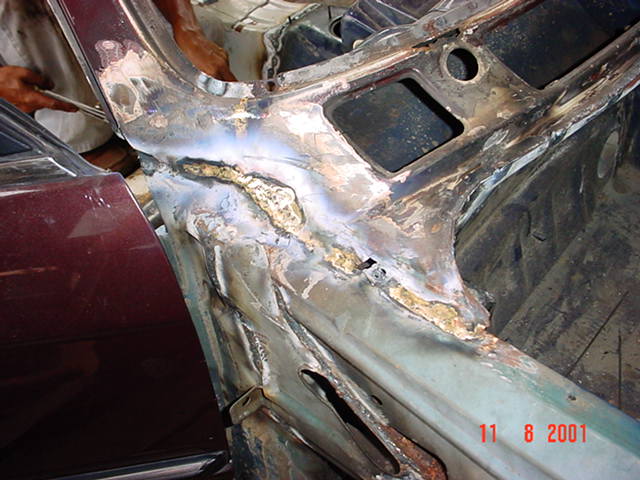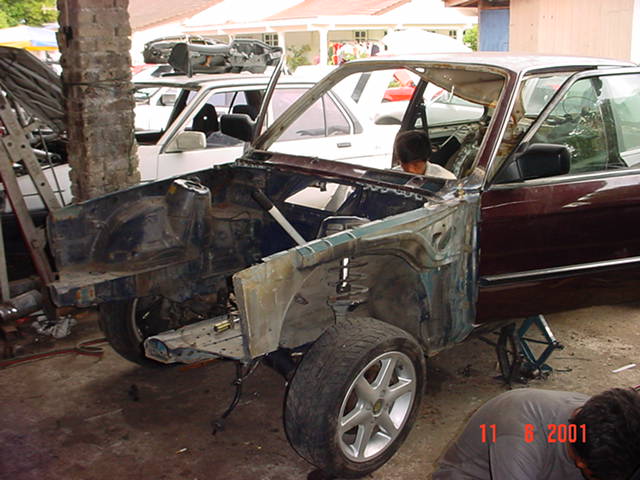 |
 |
 |
 |
 |
 |
 |
 |
 |
 |
 |
 |
 |
 |
 |
 |
 |
 |
 |
 |
 |
 |
 |
 |
 |
 |
 |
 |
 |
 |
 |
 |
 |
 |
 |
 |
 |
 |
 |
 |
 |
 |
 |
 |
|
|
|
 |
|
|
|
The Dark Side of My 320i - Cont. |
|
|
|
|
|
 |
|
|
|
 |
|
|
|
 |
|
|
|
|
|
The closed-up shots of the firewall, the cracked chasis & the elongated hole |
|
|
|
|
|
This is the front end of my car after it's being removed. Notice the "Flintstone Floorboard" ? That is how bad the rust is on my car. See also the firewall section (near the steering column) where the rust is so bad; I could bite the rusty metal quite easily. One of the holes where the lower arm is screwed onto the body is also enlarged causing my car to sway to the right upon braking. |
|
 |
|
|
|
|
|
Once the windshield is removed, I can see the rusty spots along the edge of the windshield frame.The picture shows where the new front end and the old windshield frame are to be welded together. Notice also that the original chasis number is still intact because it is stamped on the original/old windshield frame.
One might ask, how can I be sure that the new front half is aligned with the original rear half of the car ? The answer is by looking at the gap around the doors when they are closed.
If they are not aligned, the doors can't be closed because the doors are hinged on the new front end and locked at the old rear half of the body structure. Even when the doors can be closed, if both ends are not aligned, the gap around the doors will be uneven. Get what I mean ? |
|
|
|
 |
|
|
|
|
|
 |
|
|
|
Copper is used at welding points for strength. The original factory welds are first removed at the joint points before the new panel is being welded back using copper. |
|
|
|
|
|
 |
|
|
|
These are the pictures when the new front end is being welded to the original rear half of the car. Once the anti-rust material is applied through out the floorboard, the joint is no longer visible. |
|
|
|
|
 |
|
|
|
|
|
 |
|
|
 |
|
|
|
|
 |
|
|
|
|
|
|
|
|
|
 |
|
|
 |
|
|
|
|
|
|
The Paintwork... |
|











